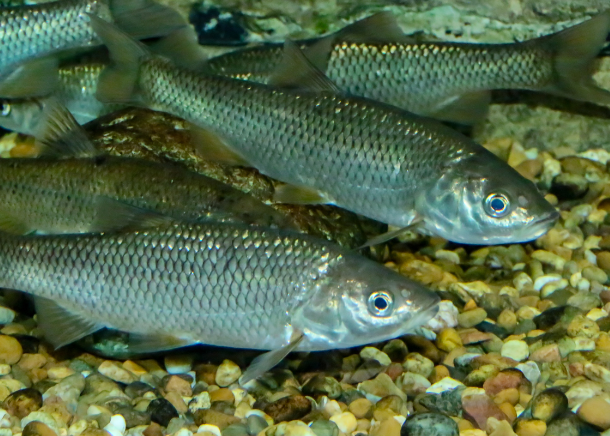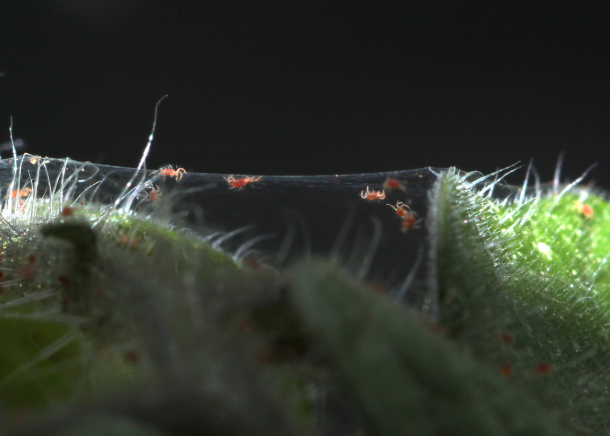Summary:
Speciation is the mechanism responsible for the incredible diversity of species that we observe today and corresponds to the build-up of reproductive isolation between different populations. Reproductive isolation itself can be generated by different mechanisms, for example ecological differentiation, mate choice or sterility of hybrids. Understanding how each of these mechanisms individually acts has been the focus of many evolutionary studies, yet how their interactions affect speciation remains largely unknown. With GeneticBarriers, we aim to understand the nature of the interactions between the different mechanisms for reproductive isolation and quantify their contributions to the formation of new species. For this, we will use a multi-disciplinary approach, combining mathematical modeling, large-scale simulations and experimental evolution. This multidisciplinary approach is reflected in the composition of the research team with 2 members with expertise in theoretical evolutionary biology and 3 members with expertise in experimental evolution and in the manipulation of the model organism. More precisely, we will initially develop a three-locus model (Task 1) and through the analysis of the corresponding system of equations, determine the stability of a genetic barrier to gene flow. We will quantify the contributions of each mechanism of reproductive isolation as well as their interactions. We will then build an extension to many loci and a more complex model using largescale simulations (Task 2). In addition, we will be able to determine when the results from Task 1, obtained for a few loci, can be readily applied to many loci. We will also describe which and when new properties emerge from the action of many loci. The theoretical predictions obtained in the first two tasks will be compared to results from experimental evolution. To do this, we will conduct an evolutionary experiment using two nascent species of spider mites (Tetranychus urticae and T. cinnabarinus). Specifically, we will set up four different regimes, corresponding to populations with and without mate choice and adapted to two different hosts (tomato and bean). With this experimental design, we will be able to investigate how the interaction between ecological differentiation and mate choice affect fitness and mating behavior (Tasks 3 and 4). Ultimately, this experimental design will allow us to assess our theoretical predictions using natural populations. The combination of these three aims and the multidisciplinary approach that we propose (theoretical modeling, large-scale simulations and experimental evolution) will provide a more holistic view on the speciation process. Considering the different mechanisms of reproductive isolations, and their relative timing, will provide new insights into how speciation proceeds. Furthermore, disentangling the nature of the interactions between these mechanisms of reproductive isolation will produce a new and better integrated comprehension of one of the fundamental processes underlying the diversity observed today. Finally characterizing and identifying the dominant mechanism(s) at play during the different stages of speciation will be crucial to understand the dynamics of contact zones, whether they formed naturally or through anthropogenic actions. Similarly, it will provide insights into the management of interactions between local and invasive species and targeted solutions towards the control of the latter. Speciation is the mechanism responsible for the incredible diversity of species that we observe today and corresponds to the build-up of reproductive isolation between different populations. Reproductive isolation itself can be generated by different mechanisms, for example ecological differentiation, mate choice or sterility of hybrids. Understanding how each of these mechanisms individually acts has been the focus of many evolutionary studies, yet how their interactions affect speciation remains largely unknown. With GeneticBarriers, we aim to understand the nature of the interactions between the different mechanisms for reproductive isolation and quantify their contributions to the formation of new species. For this, we will use a multi-disciplinary approach, combining mathematical modeling, large-scale simulations and experimental evolution. This multidisciplinary approach is reflected in the composition of the research team with 2 members with expertise in theoretical evolutionary biology and 3 members with expertise in experimental evolution and in the manipulation of the model organism. More precisely, we will initially develop a three-locus model (Task 1) and through the analysis of the corresponding system of equations, determine the stability of a genetic barrier to gene flow. We will quantify the contributions of each mechanism of reproductive isolation as well as their interactions. We will then build an extension to many loci and a more complex model using largescale simulations (Task 2). In addition, we will be able to determine when the results from Task 1, obtained for a few loci, can be readily applied to many loci. We will also describe which and when new properties emerge from the action of many loci. The theoretical predictions obtained in the first two tasks will be compared to results from experimental evolution. To do this, we will conduct an evolutionary experiment using two nascent species of spider mites (Tetranychus urticae and T. cinnabarinus). Specifically, we will set up four different regimes, corresponding to populations with and without mate choice and adapted to two different hosts (tomato and bean). With this experimental design, we will be able to investigate how the interaction between ecological differentiation and mate choice affect fitness and mating behavior (Tasks 3 and 4). Ultimately, this experimental design will allow us to assess our theoretical predictions using natural populations. The combination of these three aims and the multidisciplinary approach that we propose (theoretical modeling, large-scale simulations and experimental evolution) will provide a more holistic view on the speciation process. Considering the different mechanisms of reproductive isolations, and their relative timing, will provide new insights into how speciation proceeds. Furthermore, disentangling the nature of the interactions between these mechanisms of reproductive isolation will produce a new and better integrated comprehension of one of the fundamental processes underlying the diversity observed today. Finally characterizing and identifying the dominant mechanism(s) at play during the different stages of speciation will be crucial to understand the dynamics of contact zones, whether they formed naturally or through anthropogenic actions. Similarly, it will provide insights into the management of interactions between local and invasive species and targeted solutions towards the control of the latter.
Funding Institution:
Fundação para a Ciência e Tecnologia - FCT.








